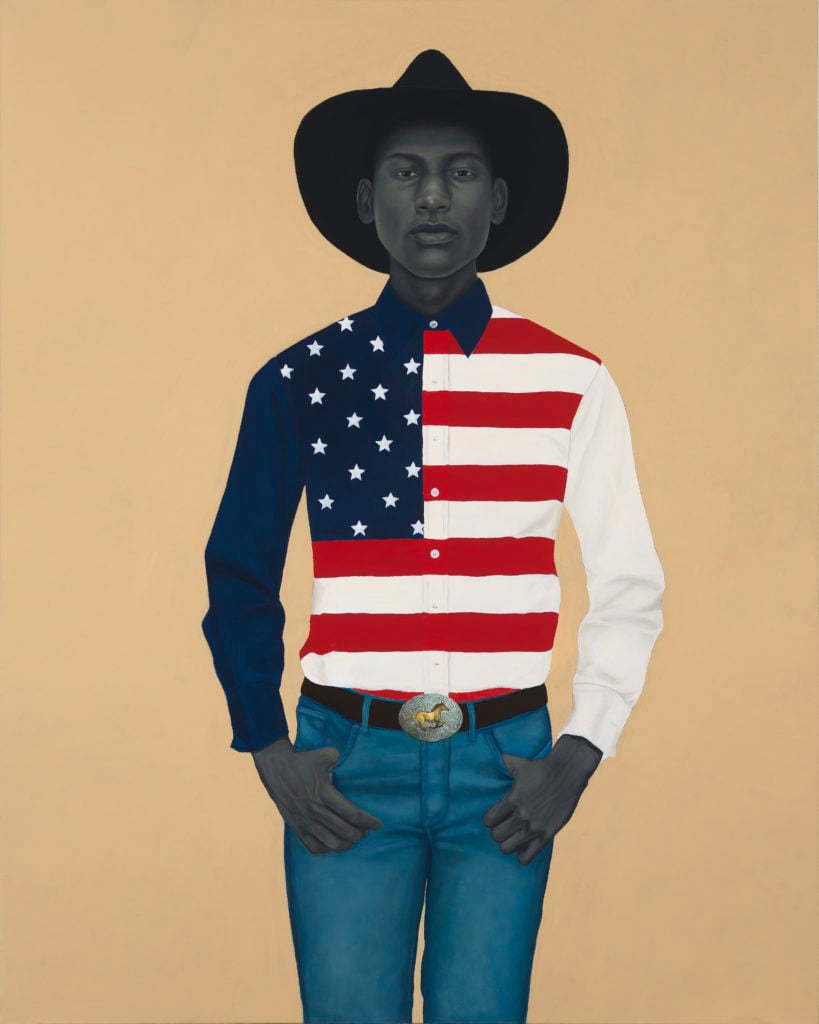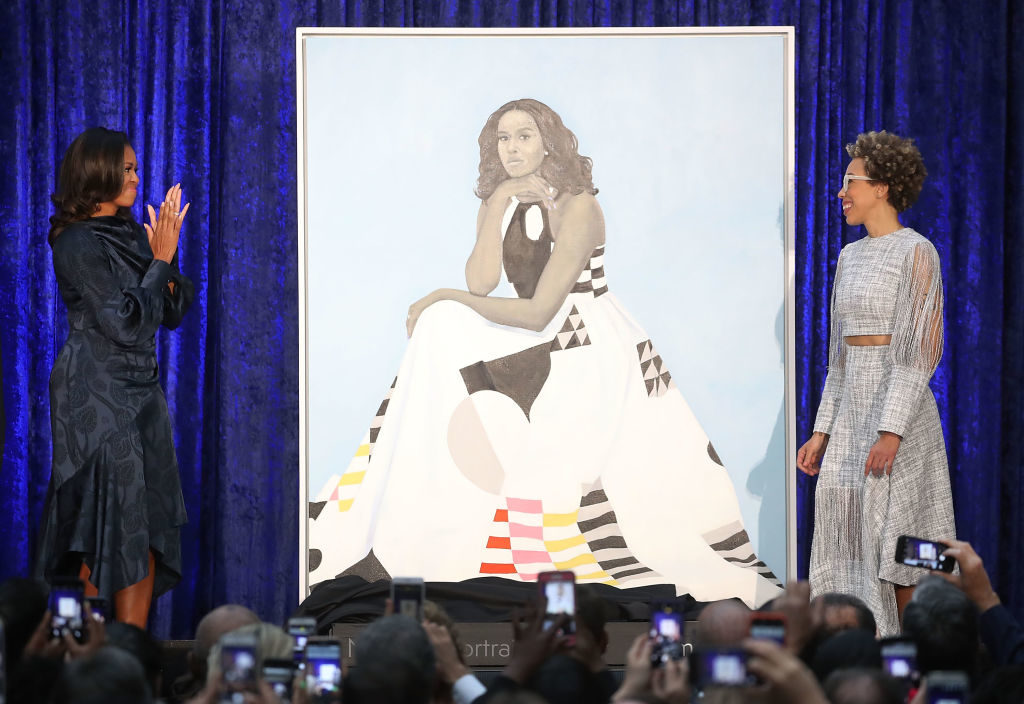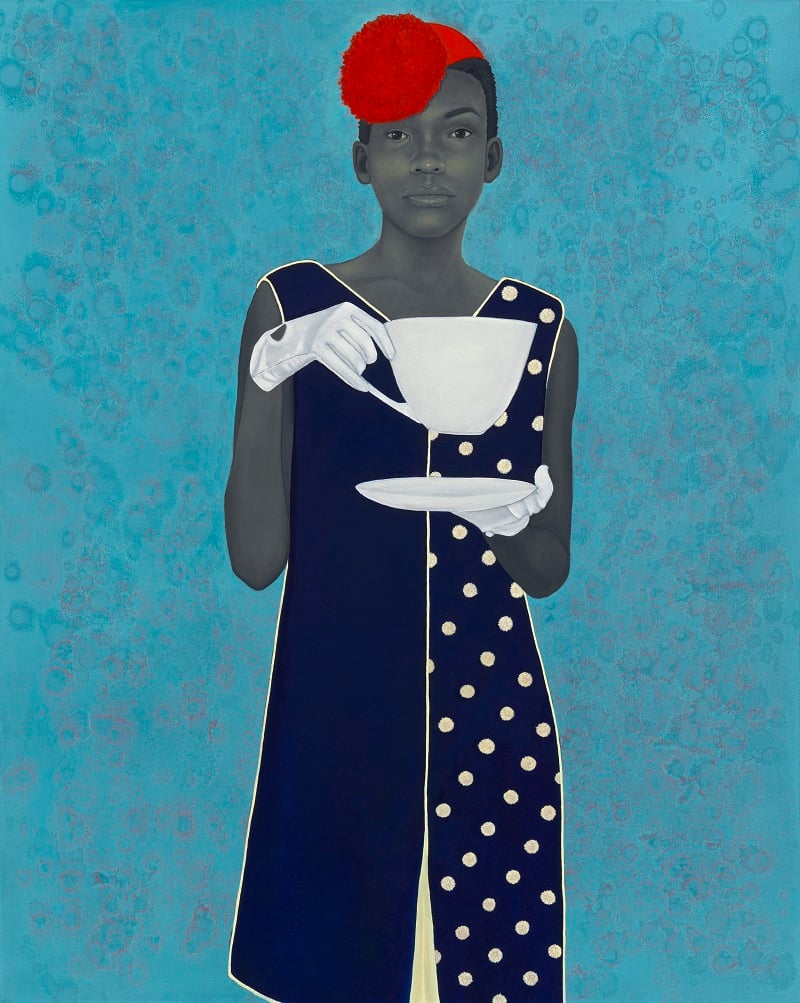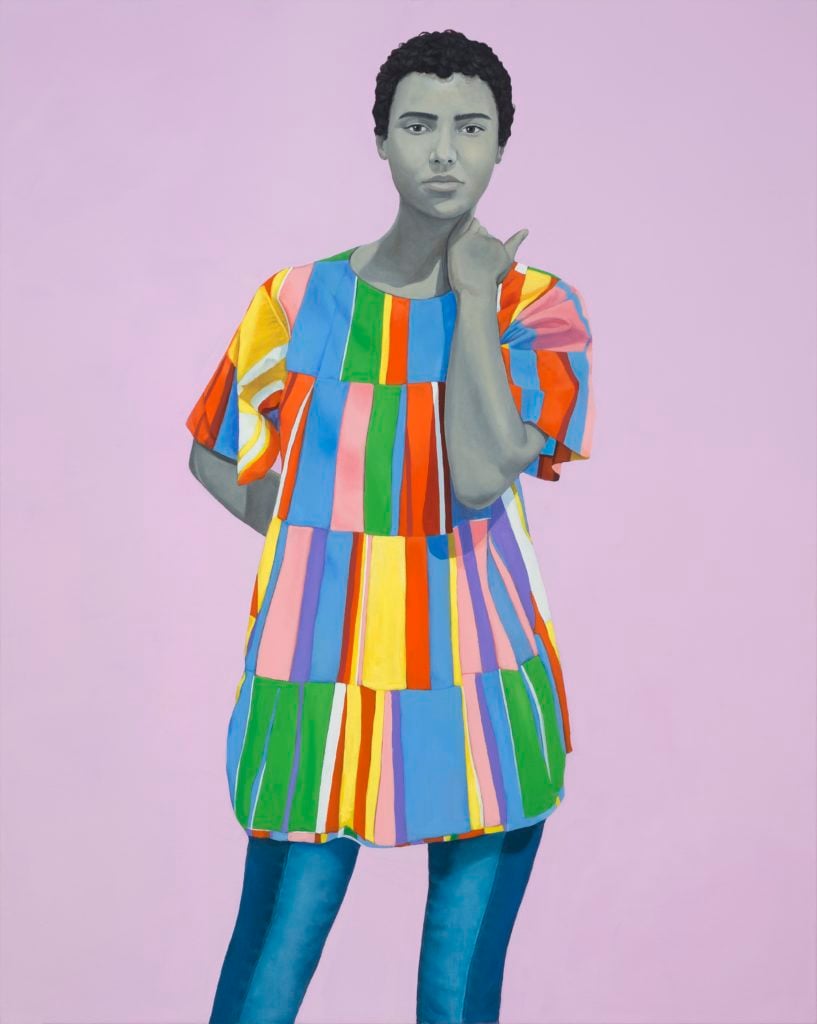Galleries
Amy Sherald, Michelle Obama’s Portraitist, Will Now Be Represented by Hauser & Wirth Worldwide
The artist, whose art career began in earnest only in 2012, will have her first show at the gallery in New York in 2019.

The artist, whose art career began in earnest only in 2012, will have her first show at the gallery in New York in 2019.

Julia Halperin

Hauser & Wirth has made a newsworthy addition to its roster: Amy Sherald, the painter behind the official portrait of former First Lady Michelle Obama and other arresting portraits of African American subjects. The rising star has joined the mega-gallery and will be represented through its outposts worldwide, Hauser & Wirth announced today.
This has been a big year for Sherald. Last month, millions watched as she unveiled her portrait of Michelle Obama to the world. In May, Sherald will debut her first major solo museum exhibition at the Contemporary Art Museum St. Louis. Not bad for an artist who only had her first solo gallery show in 2016.

Former U.S. first lady Michelle Obama (L) and artist Amy Sherald unveil her portrait at the Smithsonian’s National Portrait Gallery. Photo by Mark Wilson/Getty Images.
The 44-year-old Sherald was previously represented by Monique Meloche Gallery in Chicago, which helped build her into both a critical and collector phenomenon. Now represented exclusively by Hauser & Wirth, Sherald is scheduled to hold her first exhibition with the Swiss-owned gallery in New York in 2019.
While many star artists working today have been accused of overproducing, Sherald isn’t one of them. To date, her output comprises some 30 portraits. She creates only 10 to 12 paintings a year. As of December, the waiting list for her work had grown to around 50 people.

Amy Sherald’s Miss Everything (Unsuppressed Deliverance) (2013). The painting earned Sherald first prize in the 2016 Outwin Boochever Portrait Competition from the National Portrait Gallery in Washington D.C. Image Frances and Burton Reifler © Amy Sherald. Courtesy of the National Portrait Gallery and Monique Meloche Gallery, Chicago.
This limited supply, combined with careful guidance from Meloche, has created a sustainable market for Sherald’s art. At Untitled in Miami Beach last year, Meloche placed three of her portraits with museums on the fair’s opening day. She has steadily increased Sherald’s prices from $8,500 in 2015, when Meloche included her in a group show, to $50,000 for the paintings recently sold in Miami.
“We are excited for Amy about this great news, which has been under discussion by all parties for some time,” Meloche told artnet News in an email. “We will continue to work with Amy and look forward to supporting her upcoming solo show at CAM that we’ve been working on for over a year as well as her 2020 survey exhibition at the Baltimore Museum of Art.” She declined to elaborate further on her relationship with Sherald.
Sherald spends much of her time searching for models, who she finds everywhere from the streets of New Orleans to a coffee shop in Baltimore, where she lives. She carefully selects outfits that feel timeless, shoots them outdoors in natural light, and paints them—notably with grey skin—against monochrome backgrounds. Her subjects always peer out directly at the viewer.
Sherald’s journey to stardom began later than most. Her art career only revved up in earnest in 2012. She worked as a waitress until she was 38. A survivor of congestive heart failure, she received a transplant at age 39. She also took a four-year break from art to care for two ill family members in her home state of Georgia.

Amy Sherald’s Untitled (2017). Courtesy the artist and Monique Meloche Gallery, Chicago.
“Amy’s distinctive approach to both painterly traditions and urgent issues of contemporary identity make her one of the most powerful new voices in American art today,” Marc Payot, a vice president and partner at the gallery, said in a statement.
Sherald’s influences range from the 16th-century Northern Renaissance artist Hans Holbein (who also painted his subjects against monochrome backgrounds) to the Swedish painter Odd Nerdrum (a former teacher who taught her to begin modeling her subjects in grisaille, the technique that came to form the foundation of her signature style).
She has also been inspired by photographs compiled by the historian W.E.B. Du Bois for display at the Paris Exposition in 1900, which depict African American men, women, and children in self-styled poses—”some of the first images where blacks were able to present themselves the way they wanted to be seen,” Sherald has said. “Painting images that look like that was really important, not just for ourselves, but for the rest of the world to see us that way, too.”